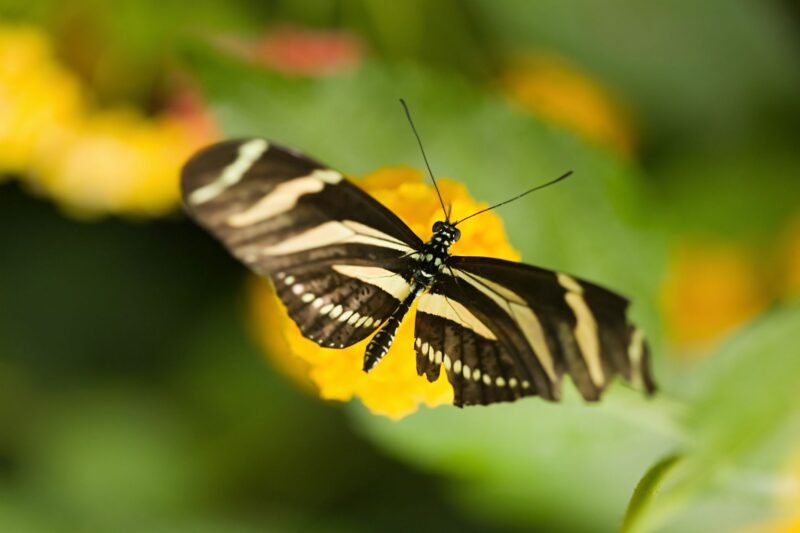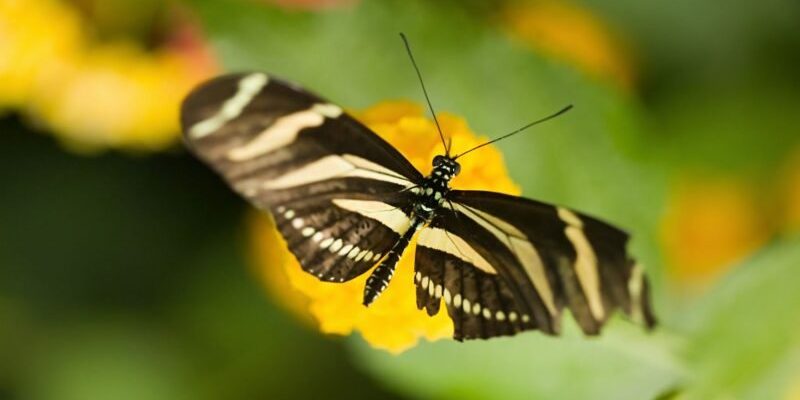
As we explore this topic, it’s essential to appreciate just how unique butterflies are in the animal kingdom. They play a crucial role in ecosystems as pollinators, and their life cycle is a marvel of transformation. So, whether you’re an insect enthusiast or just curious about these enchanting insects, there’s something here for everyone.
1. Butterflies Taste with Their Feet
You might think tasting food is all about the tongue, but butterflies have a different approach. They actually taste with their feet! That’s right. When a butterfly lands on a plant, tiny sensors on its feet help it determine if the plant is a good place to lay eggs or if it has delicious nectar. It’s like they’re taking a quick sample without even needing to take a bite!
Imagine walking through a beautiful garden and tasting everything just by walking on it. This special ability ensures that butterflies can find the best food sources and potential homes for their future caterpillars. It’s a pretty smart strategy when you think about it!
2. Their Colorful Wings Aren’t Just for Show
Butterfly wings are incredibly vibrant and eye-catching, often making them stand out in any garden. But did you know that those colors serve a purpose? Butterflies use their wings for more than just attracting mates; they also rely on them for camouflage and temperature regulation!
Some butterflies have wings that can blend into their surroundings, helping them avoid predators. Others can reflect sunlight to stay cool or soak it up to warm themselves up. It’s like having built-in survival gear—who knew they were such clever little creatures?
3. They Go Through Four Stages of Life
Butterflies undergo one of the most fascinating transformations in nature, called metamorphosis. This process consists of four distinct stages: egg, larva (caterpillar), pupa (chrysalis), and adult butterfly.
– Egg: It all starts when a female butterfly lays her eggs on the leaves of a suitable plant.
– Caterpillar: Once they hatch, tiny caterpillars emerge, and their main job is to eat and grow. They can munch through an astonishing amount of leaves!
– Chrysalis: After a time, they enter the pupal stage. Inside the chrysalis, the caterpillar literally transforms into a butterfly. This stage can take from a few days to several weeks, depending on the species and environmental conditions.
– Adult Butterfly: Finally, the butterfly emerges from the chrysalis, ready to spread its wings and start the cycle all over again.
It’s a breathtaking journey that highlights the beauty of change and growth.
4. Butterflies Are Super Pollinators
When we think of pollinators, bees often come to mind first. However, butterflies also play a vital role in this process. They visit flowers to sip nectar, and in doing so, they collect and transfer pollen from one bloom to another.
This helps flowers reproduce, which is crucial for maintaining healthy ecosystems. So, next time you see a butterfly fluttering from flower to flower, remember that it’s not just being pretty. It’s doing important work to keep our gardens and wild spaces vibrant and full of life!
5. They Can See a Rainbow of Colors
Butterflies have some pretty impressive vision compared to humans. While we can see a range of colors, butterflies can see ultraviolet light, which is invisible to us. This special ability helps them spot patterns on flowers that are designed to attract them. It’s like wearing special glasses that reveal hidden messages in nature!
Imagine standing in a beautiful field of flowers and seeing vibrant patterns that guide you to the sweetest nectar. That’s the butterfly’s world—full of colors and signals that we can’t even perceive.
6. Their Lifespan Can Vary Wildly
Butterflies, like many creatures, have varied lifespans depending on their species. Some butterflies, like the Monarch, can live up to several months, especially during migration. Others, such as the Brassolid, may only live for a few weeks.
This wide range can be attributed to several factors, including environmental conditions, predation, and food availability. Think about it: a butterfly that lives just a few weeks has a very different life experience compared to one that migrates hundreds of miles!
7. Butterflies Don’t Eat Solid Food
While we humans enjoy a range of solid foods, butterflies have a different approach to dining. They don’t have mouths like we do. Instead, they have a long, tube-like structure called a proboscis that helps them suck up liquids. This is how they drink nectar from flowers.
So, if you ever see a butterfly perched on a blossom, it’s sipping instead of munching. It’s like having a built-in straw! They can also feed on other liquids—like tree sap or even puddles of water—giving them a varied diet.
8. They Can Be Migratory
Speaking of Monarchs, did you know that some butterfly species are migratory? The Monarch butterfly, for instance, takes an incredible journey of up to 3,000 miles from Canada to Mexico every year. They travel thousands of miles, often facing many challenges along the way, like weather changes and predators.
This epic migration is not just a seasonal trip; it’s a survival instinct. Butterflies look for warmer temperatures and food sources during the colder months. It’s a tough journey, but it ensures their survival and supports their unique life cycle.
9. Butterflies Are Sensitive to Pollution
Butterflies are surprisingly sensitive to environmental changes, especially pollution. They thrive in clean habitats and can struggle in areas contaminated with pesticides and chemicals. This sensitivity makes them great indicators of environmental health.
If you see lots of butterflies in your area, it’s often a good sign that the ecosystem is thriving. On the other hand, fewer butterflies can signal problems in the environment. This highlights the importance of protecting their habitats and reducing harmful pollutants.
10. There Are Over 20,000 Species of Butterflies
Lastly, let’s talk numbers. There are over 20,000 species of butterflies worldwide, each with unique colors, patterns, and behaviors. From the tiny Elf Butterfly to the large and majestic Swallowtail, there’s an incredible diversity within this group of insects.
This variety means that butterflies can be found in almost every environment, from rainforests to deserts. Each species plays its part in the ecosystem, contributing to the beauty and complexity of our natural world.
In conclusion, butterflies are more than just pretty creatures flitting around gardens; they’re vital players in our ecosystems with fascinating lives of their own. From their tasting feet to their incredible migration journeys, these insects pack a lot of surprises. The next time you spot a butterfly, take a moment to appreciate all the little wonders it represents. After all, nature has a way of reminding us how interconnected we all are—one flutter at a time.

